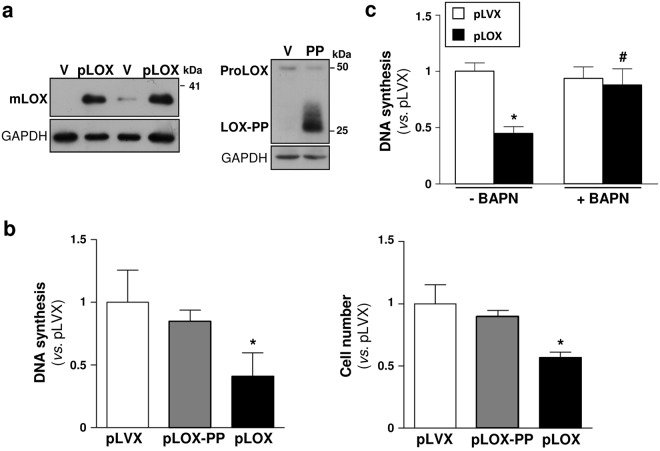Figure 4.
Over-expression of LOX-PP did not affect VSMC proliferation. Human VSMC were transduced with a lentiviral vector encoding for full-length LOX (pLOX; black bars), LOX-PP (pLOX-PP; grey bars) or with the corresponding empty vector (pLVX; V; white bars). (a) Immunoblots corresponding to mature LOX (mLOX; left panel) and LOX-PP (right panel) are shown. The position of the pro-enzyme (ProLOX, right panel), detected with the antibody against the propeptide, was also indicated. GAPDH was analyzed as a loading control. Displayed blots are not cropped from different gels or different parts of the same gel and images conform the digital image and integrity policies of the journal. Representative immunoblots from 3 independent experiments were shown. (b) Transduced VSMC were serum-starved for 24 h and then stimulated with 20% FCS. Cell proliferation was evaluated by the [3H]-thymidine incorporation method (left panel) or by cell count (right panel) in these cells. Results represented as mean ± SD. *P < 0.003 vs. pLVX (Kruskal-Wallis; at least n = 6). (c) [3H]-thymidine incorporation into DNA assessed in human VSMC transduced with lentiviral particles for full-length LOX (pLOX; black bars), or the corresponding empty vector (pLVX; white bars) treated or not with BAPN (500 µM). Results are represented as mean ± SD. P < 0.0001: * vs. pLVX; # vs. pLOX transduced cells (Two-way ANOVA; at least n = 9).

